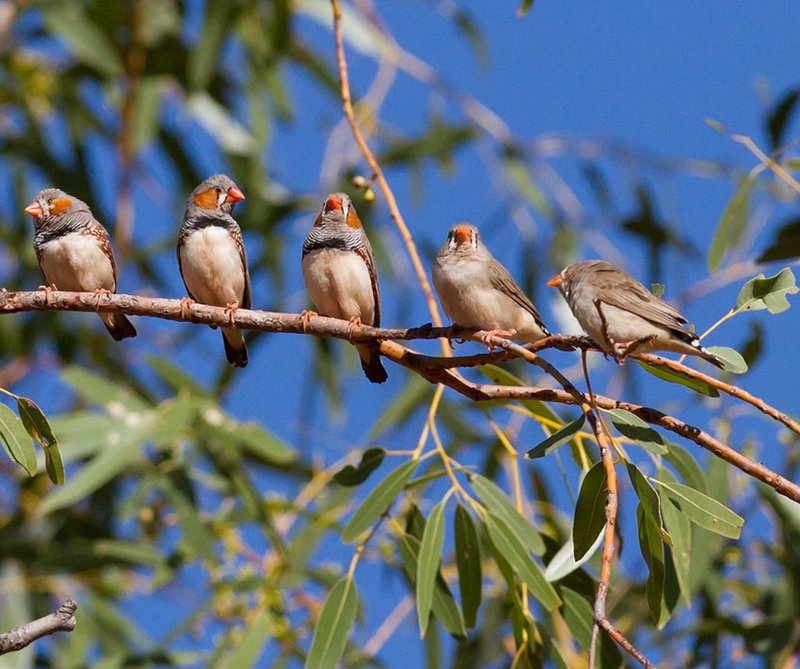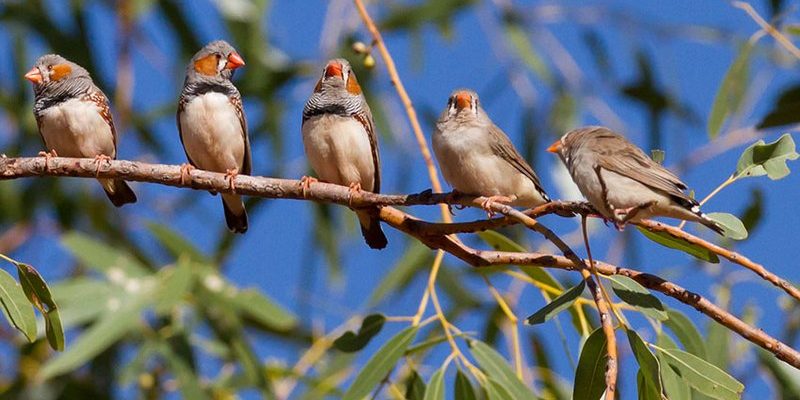
Zebra finches are not just popular pets; they’re also widely studied in scientific research. Their ability to mimic sounds and engage in complex social interactions has captured the attention of avian enthusiasts and scientists alike. So, pour another cup of coffee, sit back, and let’s dive into some interesting facts about this extraordinary bird!
1. Originating from Australia
Zebra finches are native to Australia and can be found in a variety of habitats, from grasslands to shrublands. Imagine them flitting around in these open spaces, living amongst other wildlife. Their adaptability to different environments has helped them thrive in the wild.
What’s really cool is that they are also found in New Guinea and some parts of Indonesia. Their ability to survive in challenging conditions, like extreme temperatures and droughts, speaks volumes about their resilience. It’s a bit like being a seasoned traveler who knows how to navigate any situation!
2. Social Birds
Here’s the thing: zebra finches aren’t solo artists; they prefer to be in groups. Known for their sociable nature, these birds often live in flocks, sometimes numbering in the hundreds! This communal lifestyle helps them protect each other from predators and creates a vibrant, bustling atmosphere.
You might be wondering how they communicate within these flocks. They use a variety of chirps, whistles, and trills. Each bird has its own distinct song, which not only showcases their personality but also helps reinforce social bonds. Think of it as a lively conversation among friends, full of ups and downs!
3. Remarkable Mimics
Did you know zebra finches are talented mimics? They can imitate sounds from their environment, including other bird calls, human voices, and even electronic noises. This skill isn’t just for show; it plays a crucial role in their social interactions.
When a zebra finch mimics another bird’s call, it might be trying to fit in or attract a mate. It’s like when you pick up a new slang word from friends just to blend in! This ability to mimic sounds makes them incredibly engaging pets. For anyone thinking about getting a zebra finch, prepare for some entertaining performances!
4. Colorful Appearance
The zebra finch isn’t just known for its song; they’re also visually stunning. Males boast bright orange cheek patches and bold black-and-white stripes, while females have a more subdued palette. This difference is a classic example of sexual dimorphism, where males and females of a species show distinct differences in appearance.
These vibrant colors aren’t just for looks; they also play a role in mating rituals. Males display their plumage to attract females, showcasing their health and vitality. It’s much like how we dress up for a special occasion; we want to put our best foot forward!
5. Lifespan and Breeding Habits
In the wild, zebra finches typically live for about 3 to 5 years, but with proper care in captivity, they can live up to a decade or more. That’s a significant commitment if you’re considering adopting one!
When it comes to breeding, these birds are prolific. A pair can produce several clutches of eggs each year, sometimes raising up to six chicks at a time. The female builds the nest, while both parents are involved in caring for their young. This teamwork is essential, much like how families come together to support one another.
6. Unique Vocal Learning
One of the most fascinating aspects of zebra finches is their ability to learn songs. Young males learn their tunes from adult males, usually their fathers. This process is similar to how humans learn language. They listen, practice, and eventually perfect their singing skills.
Interestingly, this vocal learning is a hot topic in scientific research. Studying these birds helps scientists understand how language develops in humans. Imagine being part of a study that explores not just bird song, but also the very foundations of communication!
7. Diet and Nutrition
Feeding zebra finches is relatively straightforward, but it’s important to understand their dietary needs. They thrive on a diet of seeds, grains, fresh fruits, and vegetables. Think of it as a balanced meal plan—they need variety to stay healthy!
If you decide to keep them as pets, providing a mix of high-quality seeds and occasional fresh produce ensures they get all the nutrients they need. It’s like cooking a wholesome meal; the right ingredients make all the difference!
8. Easy to Care For
For anyone looking to keep zebra finches, you’re in luck—they’re known for being low-maintenance pets. They don’t require much space and can be kept in a reasonably sized cage. Just make sure to provide plenty of perches and toys to keep them entertained.
Their social nature means they thrive on companionship, so it’s often best to keep them in pairs or small groups. Think of it as a playful roommate situation; they make great company!
9. Strong Territorial Instincts
While zebra finches are usually friendly, they can also be quite territorial at times. Males, in particular, might show aggression if they feel their space is being invaded. This behavior is especially noticeable during the breeding season when they become protective of their nests.
If you’re thinking about introducing new birds to the mix, it’s important to do it gradually. Kind of like introducing a new friend to your group—take it slow and observe how everyone interacts!
10. Research and Conservation
Finally, the zebra finch is more than just a cute pet—it’s also a subject of important research. Scientists study their behaviors, vocalizations, and genetics to gain insights into broader biological concepts. This research can help us understand communication, social structures, and even brain function.
Conservation efforts are crucial too. While zebra finches are not currently endangered, habitat loss can affect their populations. It’s essential to support wildlife preservation efforts to ensure these charming birds remain a part of our world for generations to come.
In Conclusion, zebra finches are compelling little creatures that offer a window into the fascinating world of avian life. From their social interactions and stunning appearances to their remarkable vocal abilities, there’s so much to appreciate about these birds. Whether you’re a bird lover or simply curious, learning about zebra finches can bring a little joy and insight into your day. So next time you hear a chirpy tune, take a moment to admire the little vocalist making the music!

